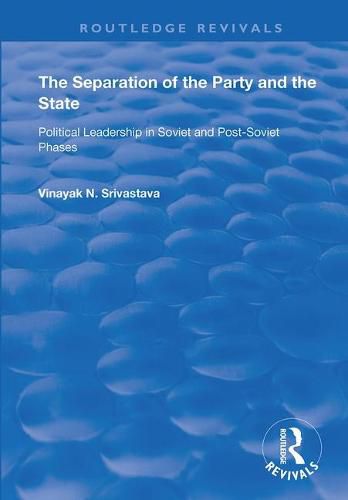Readings Newsletter
Become a Readings Member to make your shopping experience even easier.
Sign in or sign up for free!
You’re not far away from qualifying for FREE standard shipping within Australia
You’ve qualified for FREE standard shipping within Australia
The cart is loading…






First published in 1999, this volume is the first full length study of one of the most important political institutions of the erstwhile Soviet political system - the Central Committee of the Communist Party of the Soviet Union (CPSU). The originality of this work lies in its main argument that the central reform during Perestroika was that of the Party and the State - a reform which ultimately resulted in the CPSU and its institutions, the Central Committee being one of the most vital among them - firstly, surrendering the monopoly over political power and control over the instrumentalities of the State and secondly, systematically de-institutionalising and dismantling the formidable Soviet political system. The seeds of transformation and the shape of politico-economic and socio-cultural systems that emerged in successor States were laid down during the Soviet era - in particular during Perestroika itself. The continuity is, therefore, as striking as the change - if not more so.
$9.00 standard shipping within Australia
FREE standard shipping within Australia for orders over $100.00
Express & International shipping calculated at checkout
First published in 1999, this volume is the first full length study of one of the most important political institutions of the erstwhile Soviet political system - the Central Committee of the Communist Party of the Soviet Union (CPSU). The originality of this work lies in its main argument that the central reform during Perestroika was that of the Party and the State - a reform which ultimately resulted in the CPSU and its institutions, the Central Committee being one of the most vital among them - firstly, surrendering the monopoly over political power and control over the instrumentalities of the State and secondly, systematically de-institutionalising and dismantling the formidable Soviet political system. The seeds of transformation and the shape of politico-economic and socio-cultural systems that emerged in successor States were laid down during the Soviet era - in particular during Perestroika itself. The continuity is, therefore, as striking as the change - if not more so.